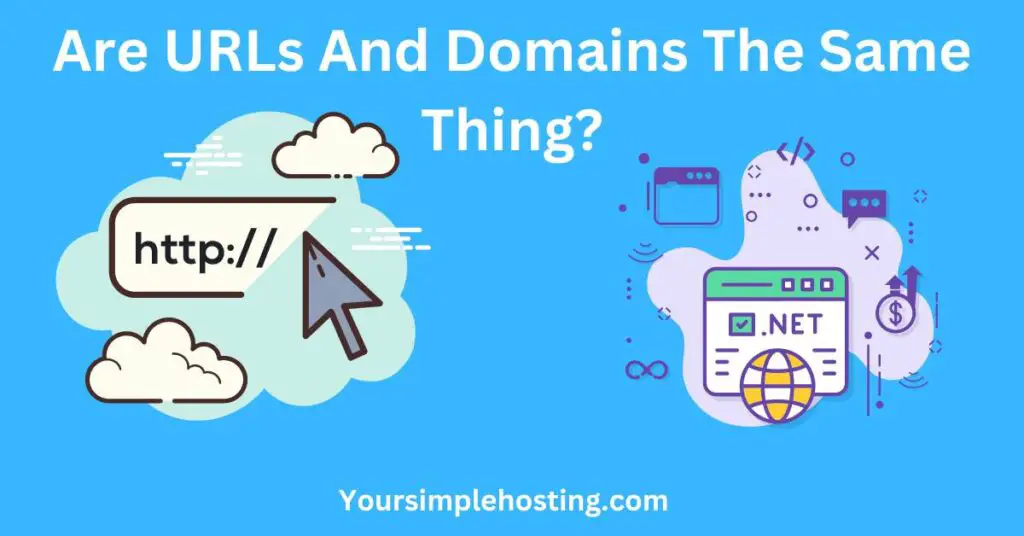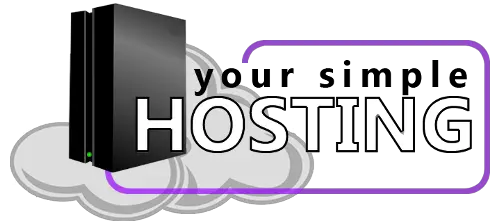URLs and Domains are different things, but they can easily be confused. They are both really important things to do with websites, how we find them, and how we identify them.
Understanding the difference between the two is key to understanding things like websites themselves, web design, website investing, and more.
In today’s article, we will discuss URLs and domains, how they are similar, and how they are different. So that you don’t mistake terms when it counts. Keep reading to learn more about URLs, domains, websites, and more.

Table of Contents
What Is A URL?
A URL is something you probably already understand and know but just didn’t know the name for. The URL is a key concept for websites to understand. Put simply, and it is a mechanism that allows browsers to locate a website’s information and present it to you in their browser.
URL is an acronym that stands for Uniform Resource Locator. A URL is quite literally an address. If your friend wants to find out where you live, they might look you up in a directory and find your literal address so that they can find you and a URL is the same thing.
Each website has a unique URL that locates it.
Occasionally, you might get a URL that redirects you back to the browser. This is often known as Error 404 ‘not found’ and is super common.
This simply means that the browser follows the address, but the website is gone from the server; although something might exist in its place, this will have its own unique URL.
Just like when you look up someone’s address, and maybe no one lives in that house anymore, or someone else lives there.
A URL is generally split into many different parts that have their own names. This can be like the varied parts of an address, such as country, street, apartment, house number, postcode, etc.
The most common parts of a URL are the scheme, domain name, port, path to file, parameters, and anchor. Example of a URL https://www.yoursimplehosting.com/do-i-need-domain-protection/
What Is A Domain?
You may have noticed that domain names are part of the URL, indicating how they are slightly different. You might wonder how a domain name is different from a domain; they are basically the same thing.
You could consider a domain name as the legible version of the domain, the latter being the specific properties and features attributed to a specific website.
For instance, ‘amazon.com’ is a specific domain that is linked to a specific IP address or an IP address range in Amazon’s specific case. Either way, a domain name is kind of like the human version of the address.
We won’t remember the exact URL of a website we want to type into the search bar, which would theoretically direct us straight to that webpage, but we do remember domain names. When we are looking for Amazon, we simply search ‘amazon’ or ‘amazon.com’ instead.
A domain name does have limits. For instance, you can’t have the same domain name as someone else, which is where website investing comes in.
If Amazon went bust for some reason and their website no longer exists, a competitor like eBay might try to buy the Amazon domain to redirect their traffic to eBay.
Top And Second-Level Domains
There are actually two specific parts to a domain that are important to understand. Namely, second-level domains and top-level domains.
In our example, a top-level domain would be the .com, or it could even be .org or indicate a region such as .au.
On the other hand, the second-level domain refers simply to the specific name that precedes the top-level domain, which is ‘Amazon’ in our case.
Subdomains
This said, don’t get second-level domains mixed up with subdomains. The subdomain refers to the www. that precedes the second-level domain. www. Is so popular that there aren’t really other subdomains so subdomains can be changed for other more practical purposes.
For instance, the subdomain can be used to organize and categorize information about that URL.
For instance, you might see ‘blog.website.com’ and ‘shop.website.com’, which can indicate whether you are in a website’s shop or blog section. Alternatively, a subdomain can indicate a region or language like a top-level domain.
An ‘en.’ subdomain denotes the website in English, whereas a ‘es.’ subdomain denotes the Spanish version of that website.
How Are URL And Domains Different?
So what should be clear from this article is that the URL contains the domain name. The domain name can refer to a website and help us identify each unique website, whereas you can consider a URL the address for a specific domain or even a page on a specific domain.
A domain helps us identify a specific website, while a URL shows us how to reach a specific website or webpage.
Conclusion
As you can see, the difference between a domain and a URL is quite small but really important for a website. In analogous terms, you can consider the URL the address of someone’s house, while the domain refers to its name.
If you know the name of a house or building, this can be good, but you might have to search to find it and still find the wrong location.
Meanwhile, the URL is the address of the location; if you know the actual address of a location you are trying to get to, even as specific as a room number, you will always be led directly to it.
Frequently Asked Questions
What Was The First Domain Name?
Today, there are around 350 million domains that have been registered across the world, some only minutes ago, while some have existed since the beginning of the internet.
The first domain to ever be registered was ‘symbolics.com’ on March 15 1985, and for around three months it was one of the only domains on the internet at the time.

Leave a Reply